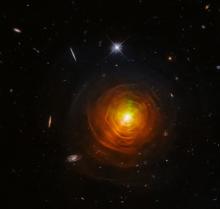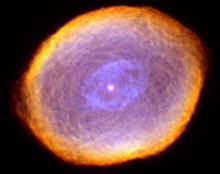Listen to today's episode of StarDate on the web the same day it airs in high-quality streaming audio without any extra ads or announcements. Choose a $8 one-month pass, or listen every day for a year for just $30.
You are here
Pollux
There’s no formula for predicting just how long a person will live. Genetics, nutrition, exercise, and other factors all play a role. But you can’t just plug in a few numbers and come up with an exact lifespan.
But that’s not the case with stars. A single number determines how long a star will live: its mass.
An example of how it works is in good view on winter nights: Pollux, the brightest star of Gemini. It rises in the east-northeast by mid-evening, below its fainter “twin,” Castor.
Pollux is almost twice as massive as the Sun. And that makes all the difference in its lifespan. Pollux is roughly 20 percent of the Sun’s age. But it’s already finished its “normal” lifetime — the phase the Sun is in right now.
During that phase of life, a star “fuses” hydrogen atoms in its core to make helium. When the hydrogen is gone, the core gets smaller and hotter, so it begins to fuse the helium to make carbon and oxygen. At the same time, its outer layers puff up like a balloon, making the star much brighter. That also makes the star’s surface much cooler, so it glows reddish orange, as Pollux does now.
Over time, Pollux will get even bigger and brighter. Then it will expel its outer layers, briefly surrounding itself with a colorful bubble of gas. That bubble will quickly fade, though, leaving only the star’s small dead core — a hot ember known as a white dwarf.
The same fate awaits the Sun — in several billion years.
Tomorrow: emptiness between the stars.
Script by Damond Benningfield






